Ibis Ripmo V2S
Wheel Size: 29’’
Travel: 147 mm rear / 160 mm front
Frame Material: Carbon Fiber
Geometry highlights:
- Sizes offered: Small, Medium, Large, XL
- Headtube angle: 64.9°
- Seat tube angle: 76° (size Large, tested)
- Reach: 475 mm (size Large, tested)
- Chainstay length: 435 mm (all sizes)
Price:
- Frame w/ Fox Float X2 Factory shock: $3,700
- Complete bikes: $6,200 to $11,700
Test Locations: Washington; Buena Vista, Colorado
Reviewers:
- David Golay (6’, 170 lb / 183 cm, 77.1 kg)
- Simon Stewart (6’, 170 lb / 183 cm, 77.1 kg)
Test Duration: 3.5 months
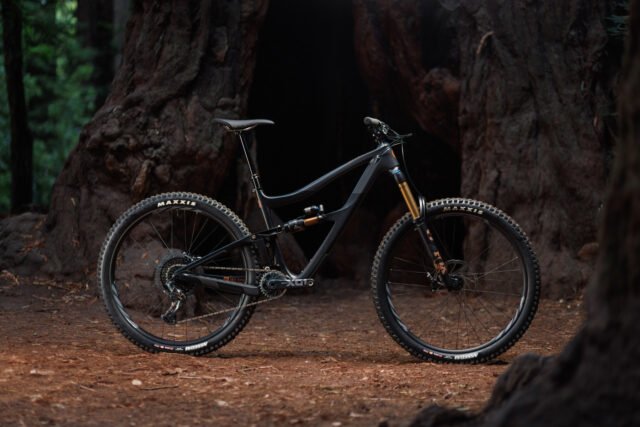
Intro
The Ibis Ripmo V2 has been around for a while now, and Ibis just gave the bike a light refresh. In addition to new colors and branding, the Ripmo gets some subtle refinements to the design. While it’s not an all-new model (Ibis is calling the new bike the “Ripmo V2S”), it does see some notable updates.
In addition to the mechanical changes that we’ll get into shortly, Ibis has redone their branding on the new bike, with their classic headbadge retired and a new logo popping up to replace it. The frame colors have been updated (and the three-tone green “Bruce Banner” paint on our review bike looks especially sharp) but there’s also a black and copper “Enduro Cell” paint option if you’d prefer something a little more subtle.
The Frame
The Ripmo V2S remains the longest-travel non-electrified bike in Ibis’ range (the new Oso e-bike has a bit more squish), and the top-level details haven’t changed much. The Ripmo V2S still gets 147 mm of rear-wheel travel from its DW-link suspension, built around a 160mm-travel fork and 29’’ wheels at both ends. It’s offered in the same four sizes (Small through XL) and the geometry carries over from the outgoing Ripmo V2 as well.
And that’s because the front triangle is actually the same — all the updates happen in the back. The new Ripmo V2S (“S” stands for “Swingarm”) gets a new rear triangle with a SRAM UDH derailleur hanger, improved chainstay protection, revised cable routing, and some refinements to the pivot bushings and links. The pivot sealing is said to be improved, and the links and swingarm have been stiffened to help with handling precision. The widened links and swingarm have pushed the new Ripmo V2S to a 55 mm chainline (from 52 mm on the prior generation).

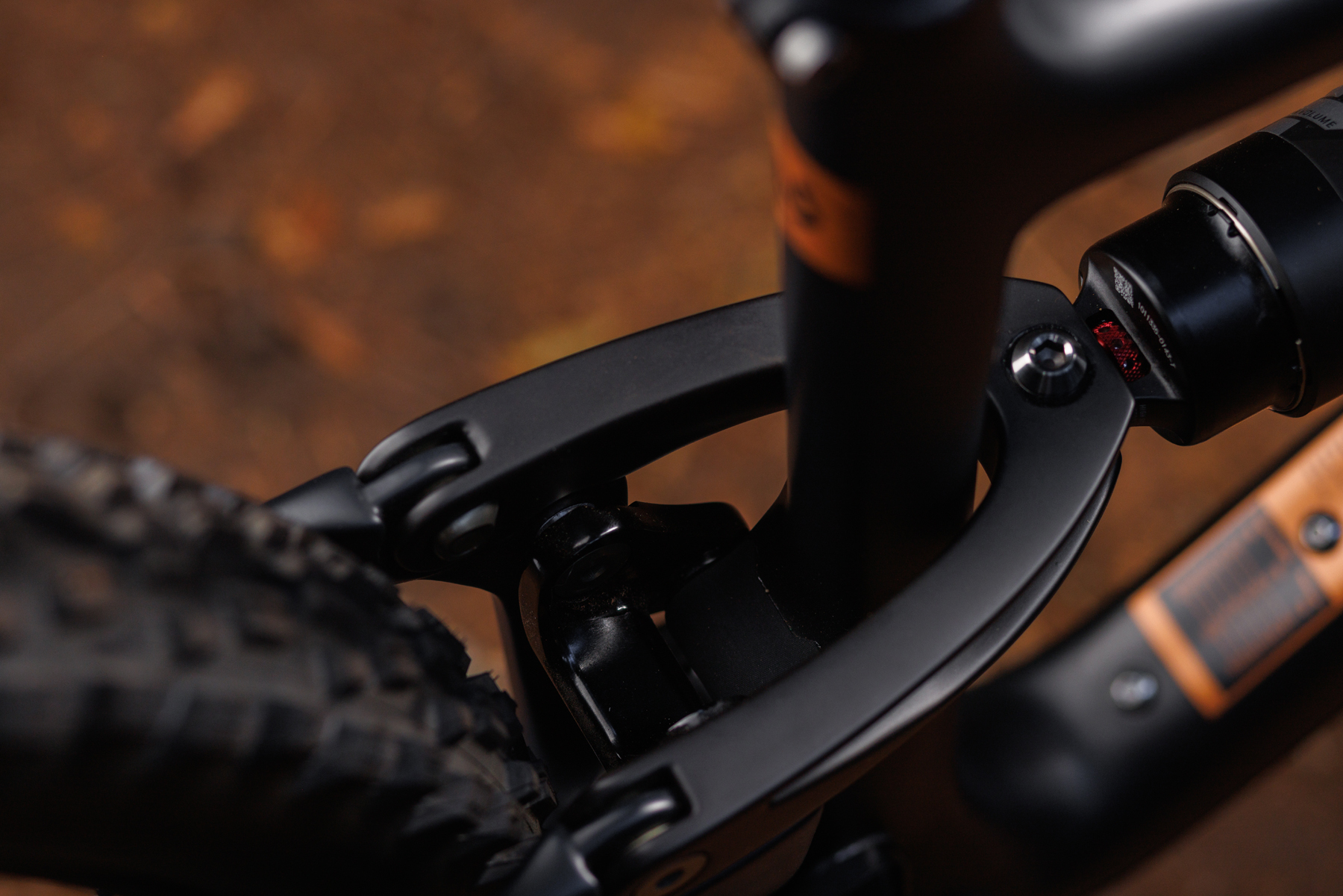
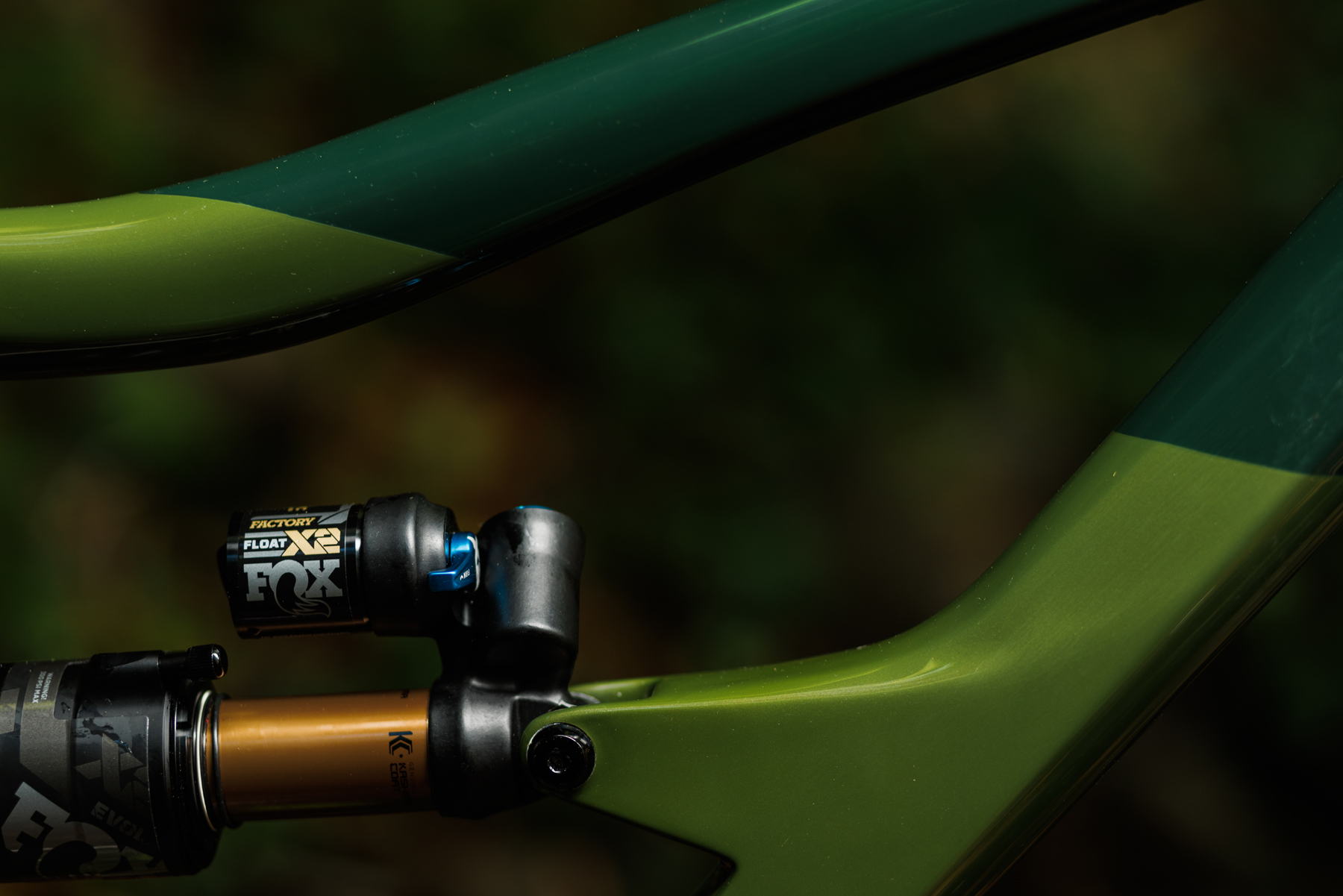
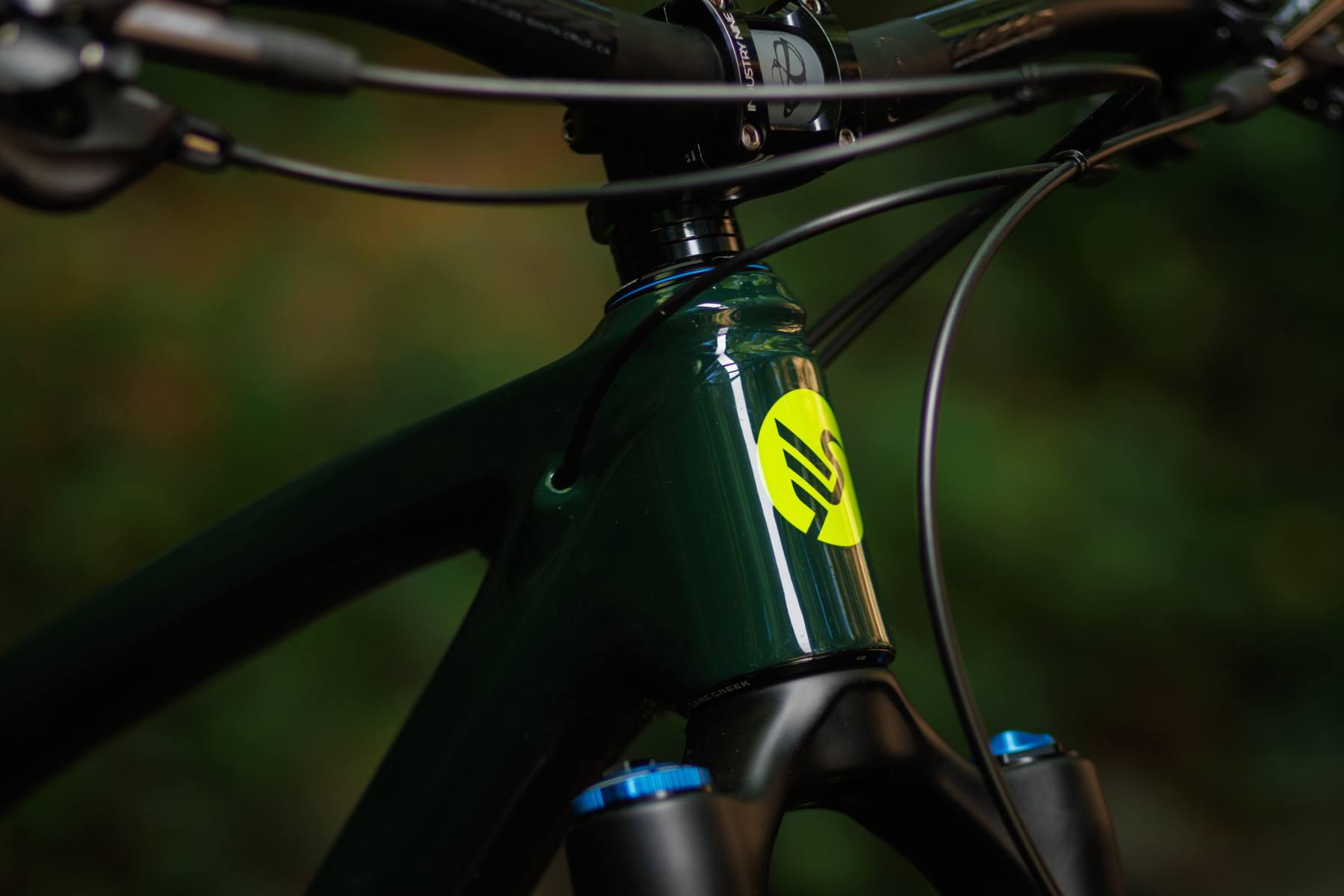
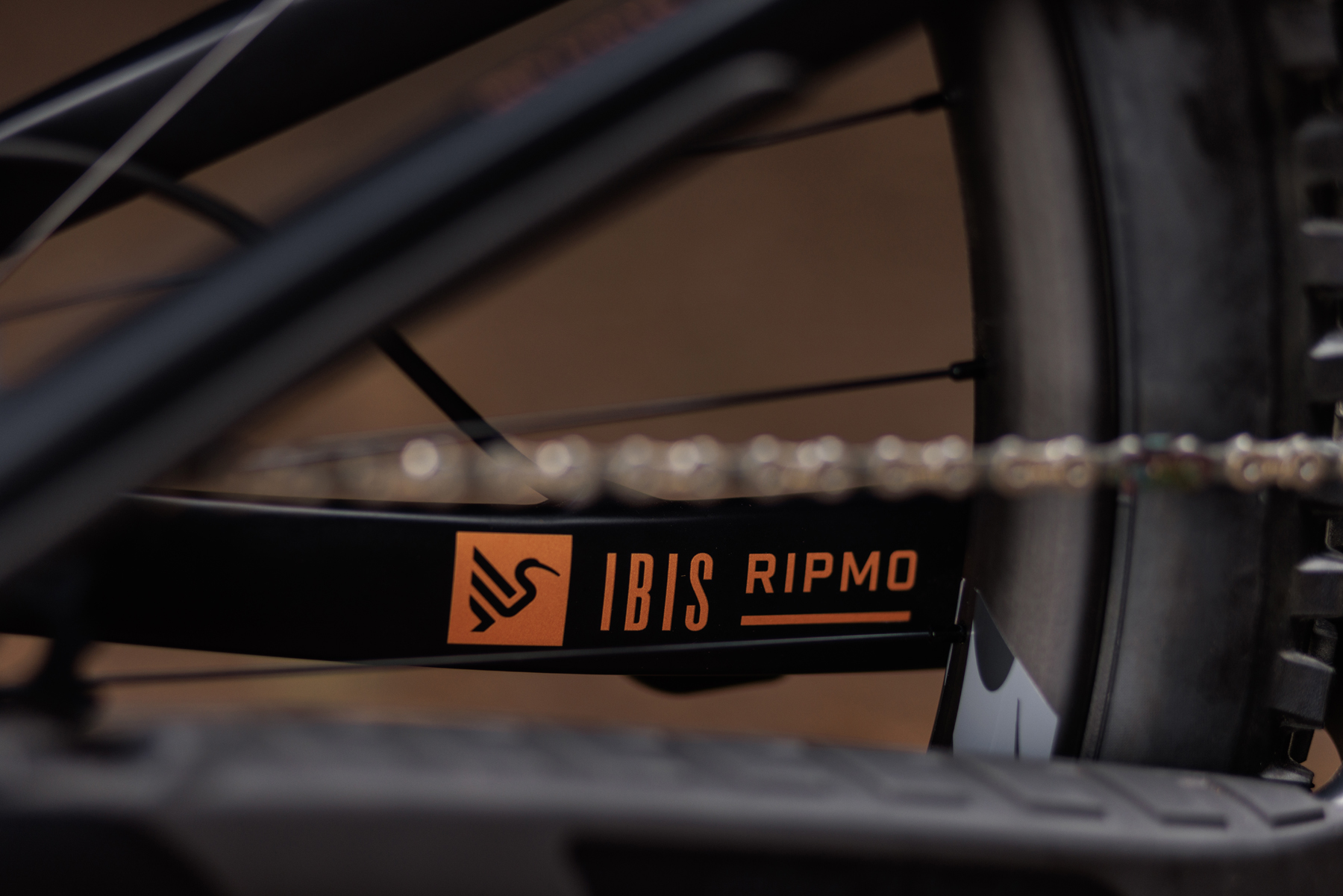

The Ripmo still uses a threaded bottom bracket shell, fully internal cable routing (which now exits the chainstay on the top, for smoother routing and less friction), and has room for a water bottle inside the front triangle on all sizes (though the Small limits the bottle size to 22 oz). The rear brake mount has been bumped up to 180 mm (adaptable to up to 203 mm), tire clearance is stated at 2.5’’, and you can run a chainring up to 34 teeth. Ibis doesn’t publish a leverage curve for the Ripmo, but says that both air and coil shocks are compatible, as long as the shock manufacturer condones use with a shock clevis, as the Ripmo features a rather large one.
The Ripmo features a mix of bearings and bushings for the pivots as appropriate to balance weight, stiffness, and durability, with the lower link and clevis riding on bushings, and the upper link (which goes through far more rotation) pivoting on bearings. Ibis will replace worn bushings for free for the life of the frame under their warranty, and the rest of the frame is covered for seven years for the original owner.
Fit & Geometry
The Ripmo V2S’ geometry hasn’t changed from the outgoing Ripmo V2. It’s still offered in four sizes (Small through XL), with a 64.9° headtube angle and 435 mm chainstays across the board, with reach ranging from 433 to 500 mm (460 mm on the Medium and 475 mm on the Large). The effective seat tube angle is 77° in the two smaller sizes and 76° in the bigger ones, and all that adds up to wheelbases ranging from 1,187 mm to 1,267 mm (1,238 mm on our size Large review bike).
There’s certainly nothing about that that looks dated, but it does raise some questions about where exactly the Ripmo fits into the modern bike landscape. All of those numbers are pretty normal for a modern longer-travel Trail bike, but it would seem that Ibis has aspirations for the Ripmo to be a bit burlier than that — and indeed, it’s the bike that their EWS team races on — so it’ll be interesting to see how all that adds up.
The builds play a significant role there, too — and the Ripmo’s builds are notably burly for a bike with its travel and geometry numbers. So with that in mind:
The Builds
Ibis offers the Ripmo in five different builds, and there aren’t really any budget options here (that’s where the Ripmo AF comes in), with Fox Factory 38 / Float X2 suspension offered across the range, and so on.
All of the builds that come with aluminum wheels by default (i.e., everything except for the top-tier XX1 AXS) can be upgraded to Ibis’ own S35 carbon rims laced to Industry Nine Hydra hubs for an additional $1,400. And though the Fox Float X2 Factory is the default shock option across the board, if you’d prefer, you can substitute a DVO Jade X coil shock onto any of the builds and save $180 in the process.
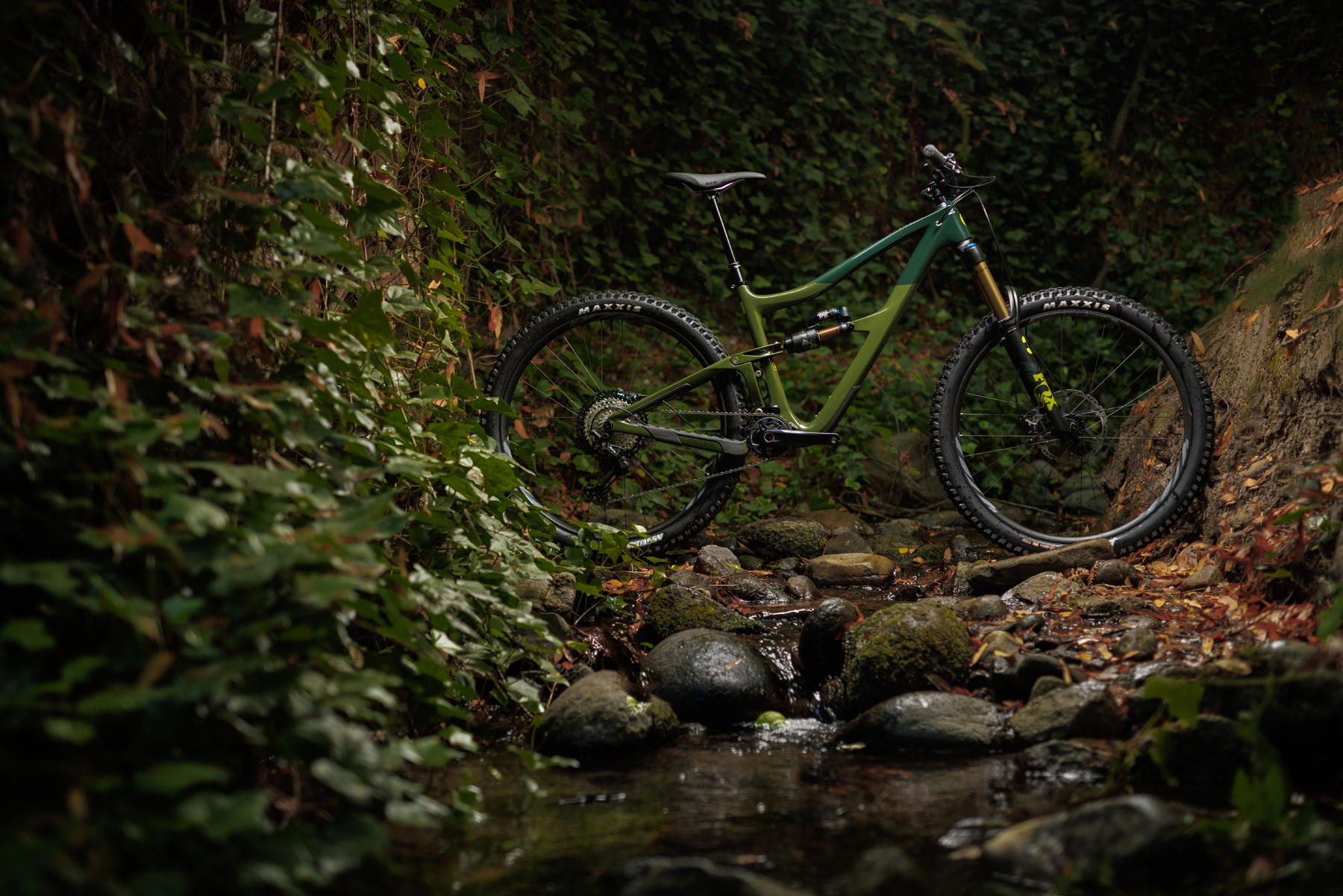
- Fork: Fox 38 Factory
- Shock: Fox Float X2 Factory
- Drivetrain: SRAM NX w/ GX derailleur
- Brakes: SRAM G2 R w/ 200 mm front / 180 mm rear rotors
- Wheels: Blackbird Send Alloy w/ Ibis hubs
- Dropper Post: KS Rage-i (S: 125 mm; M: 150 mm; L–XL: 170 mm)
- Fork: Fox 38 Factory
- Shock: Fox Float X2 Factory
- Drivetrain: Shimano SLX
- Brakes: Shimano SLX 4-piston w/ 203 mm front / 180 mm rear rotors
- Wheels: Blackbird Send Alloy w/ Ibis hubs
- Dropper Post: Bike Yoke Revive (S: 125 mm; M: 160 mm; L: 185 mm; XL: 213 mm)
- Fork: Fox 38 Factory
- Shock: Fox Float X2 Factory
- Drivetrain: Shimano XT
- Brakes: Shimano XT 4-piston w/ 203 mm front / 180 mm rear rotors
- Wheels: Blackbird Send Alloy w/ Ibis hubs
- Dropper Post: Bike Yoke Revive (S: 125 mm; M: 160 mm; L: 185 mm; XL: 213 mm)
- Fork: Fox 38 Factory
- Shock: Fox Float X2 Factory
- Drivetrain: SRAM X01
- Brakes: SRAM Code RSC w/ 200 mm front / 180 mm rear rotors
- Wheels: Blackbird Send Alloy w/ Ibis hubs
- Dropper Post: Bike Yoke Revive (S: 125 mm; M: 160 mm; L: 185 mm; XL: 213 mm)
- Fork: Fox 38 Factory
- Shock: Fox Float X2 Factory
- Drivetrain: SRAM XX1 AXS
- Brakes: Shimano XTR 4-piston w/ 203 mm front / 180 mm rear rotors
- Wheels: Ibis S35 Carbon rims w/ Industry Nine Hydra hubs
- Dropper Post: RockShox Reverb AXS (S: 125 mm; M: 150 mm; L–XL: 170 mm)
All the builds get Maxxis Assegai MaxxTerra Exo+ tires at both ends. The decision to spec a Fox 38 up front (and arguably the Float X2 shock as well) is a little bit unusual in this travel class, but makes a ton of sense given how Ibis talks about the Ripmo as blurring the line between a longer-travel Trail bike and a full-on Enduro one (not to mention that it’s what their EWS athletes are piloting).
Some Questions / Things We’re Curious About
(1) The Ripmo V2S looks to blur the lines between a longer-travel Trail bike and a bigger Enduro one, but is that borne out on the trail?
(2) And who is going to be best served by the Ripmo, as compared to either a Trail bike with similar numbers but a bit lighter build (e.g. the Santa Cruz Hightower) or any number of burlier, heavier Enduro bikes.
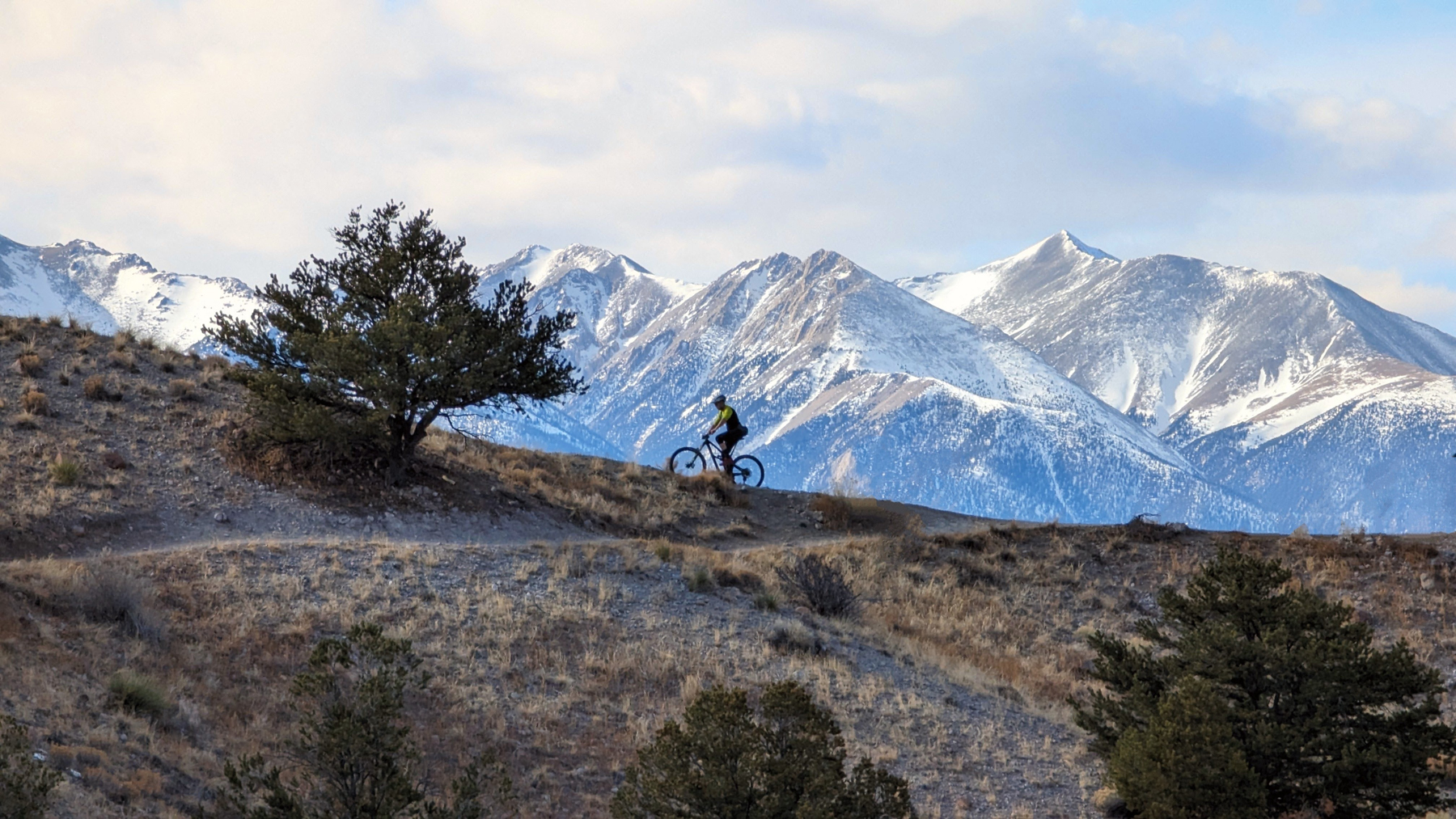
FULL REVIEW
Intro
The Ibis Ripmo has been a deservedly popular Trail / Enduro bike for quite a while now, and while it’s the bike that Ibis’ athletes have been racing in the EWS for the last few years, as modern Enduro bikes have gotten longer, slacker, and grown in travel, the Ripmo has started to edge more into the long-travel Trail category.
Ibis’ updates to the new V2S version haven’t changed that, but now that we’ve spent several months on the new iteration, it’s still an excellent bike for folks who want something that can still handle some burly descents, but is dialed back from and more versatile than the latest crop of ultra-long-travel Enduro sleds.

Fit & Sizing
David Golay: At 6’ tall (183 cm), Ibis’ recommended sizing puts me at the very bottom end of the range for the XL frame and a little more comfortably within the band for the Large. And while I think that they’re right to say that I could ride either, after riding the Large, I’m not all that interested in sizing up. At 475 mm, the reach on the Large frame is on the shorter side of my typical preferences, but my hunch is that the seated position on the XL is going to be more stretched out than I’d like, given its 655 mm effective top tube. As we’ll get into more below, the Ripmo clicked best for me as something like an Enduro-light bike, given that I could push it pretty hard, but it’s definitely less stable and more agile than a lot of (generally longer travel) true Enduro bikes. Given that, keeping the sizing a little more compact and emphasizing the nimbleness and precision of the Ripmo makes sense to me, rather than trying to size up and turn it into a full-on steamroller, which it just isn’t really.
But while the Large Ripmo feels a little more compact than a lot of the bikes I’ve been spending time on of late, I really like the fit. Smaller bikes can tend to have a correspondingly smaller-feeling sweet spot when it comes to body positioning, but apart from feeling slightly more sensitive to bar height than average (I was able to land on a setting I was happy with after swapping in a 40 mm stem and introducing a 2.5 mm headset spacer to the mix for better fine-tuning), I found the Ripmo to be quite intuitive in terms of its fit and handling.
Simon Stewart: I also stand at 6’ tall, and after one look at the geometry numbers, I knew the Large would be spot on for me; I honestly rarely entertain the option of sizing up to an XL for most bikes. The 475 mm reach is in my preferred range, and opposite to David, I’ve been spending more time on shorter-travel Trail bikes lately, so the more compact cockpit felt instantly familiar. I would say I have a fairly wide fit window in the reach / handlebar height department, but with that said, if the reach feels short, I’m usually not going to sacrifice the handling benefits of a shorter stem by swapping in a longer one — David and I align in this area, as he swapped out longer stem for a shorter one on a bike that already was a bit cramped for him.
Climbing
David: The Ripmo climbs very, very well for a 150mm-travel bike. It pedals efficiently but does an excellent job of balancing that efficiency with still maintaining solid traction under power, rather than selling out and just chasing efficiency. As per usual for the Fox Float X2 rear shock, the climb switch isn’t terribly effective, but I felt little need for one on the Ripmo anyway, even on smoother, steeper climbs.
That suspension performance, plus the comparatively compact dimensions of the Ripmo, also make it an especially good technical climber for a longer-travel bike. Ultra-long wheelbases are great for stability at speed, but also tend to make bikes more cumbersome in tighter spots, especially when dealing with stair-step-y ledges and the like when climbing. And especially if you want a somewhat longer-travel, more compliant bike that’s still an excellent technical climber (as opposed to opting for something shorter travel and more efficient) the Ripmo is a great option.

The Ripmo’s chainstays are on the shorter side at 435 mm (at least for a size Large bike — all frame sizes get the same ones) and the seat tube isn’t wildly steep at 76° effective, so the Ripmo does take a little care to keep the front wheel planted on very steep climbs. But as long as I was moderately attentive to keeping my weight forward on the saddle, it didn’t give me much trouble. If you’re just looking for a bike to grind up fire roads on and rip back down, a slightly steeper seat tube would probably be welcome, but it would also likely come at the expense of some of the versatility and technical climbing prowess that the Ripmo displays.
Simon: Climbing performance is definitely a strong point for the Ripmo, but for me, I’m going to narrow that down a bit and emphasize technical climbing — this is where I feel like the geometry and suspension unite and the Ripmo does its best work. As David said, the short-ish chainstays and moderate 76º seat tube requires a bit of finesse on the very steep sections, but it’s those exact same numbers that make it excel at ledgy technical climbing. Now, where it didn’t excel for me was on long smooth climbs. The efficiency is there, but it wasn’t enough to make the Enduro-focused build unnoticeable.
Don’t get me wrong, I love Assegais and the excellent traction that they offer, but having them front and rear on a trail bike is a lot to drag around. Thankfully, tires are an easy fix, and I think I’d be inclined to swap the rear out for a Dissector or similar, and then keep it as a spare for the front. As spec’d though, long fire road climbs had me reaching for the compression lever, which as David mentioned, is fairly ineffective on the X2. Nonetheless, I went looking for it, and not because the suspension needed it, but because I was trying to overcome the sluggishness coming from the build — most notably the tires.
Descending
David: We’ve talked a bunch about how there’s more than one way to make a bike that you can go very fast on — either by making a total sledgehammer that wants to just smash through whatever’s in front of it (e.g. the Norco Range) or by making a bike that facilitates more dynamic, precise riding and helps you to hit every line cleanly so that you don’t have to just plow through everything. As an Enduro race bike, the Ripmo is very much in the latter camp (and does it pretty well), but I don’t think it’s really accurate to look at it as a true Enduro bike first and foremost.
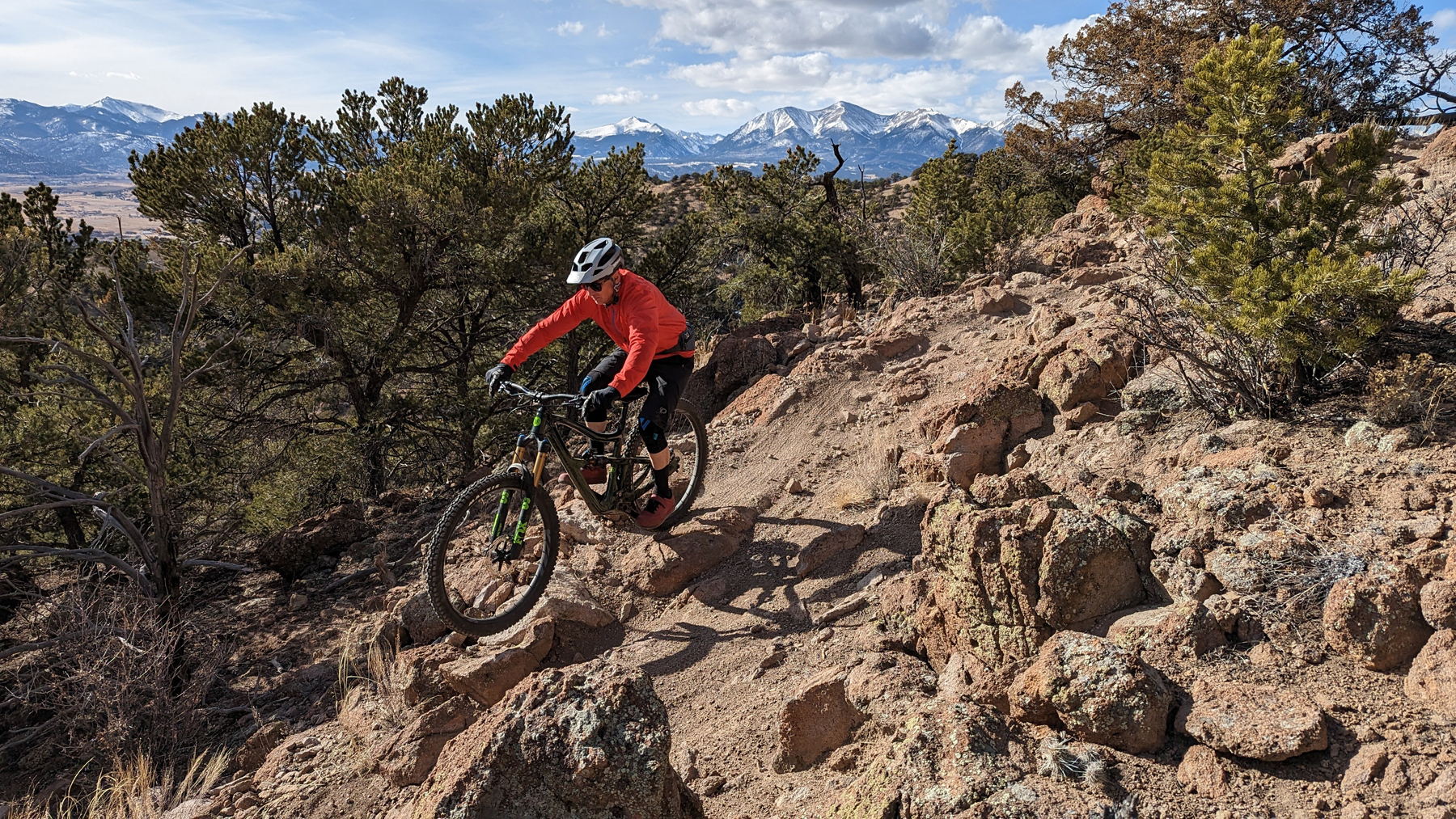
Rather, the Ripmo really feels like it’s straddling the gap between true all-rounder Trail bikes (e.g. the Santa Cruz Hightower) and more full-on Enduro ones, and with that framing in mind, it really starts to make sense. Despite the burly build, it’s pretty light (32.0 lb / 14.5 kg for our test bike, without pedals) and could absolutely be an everyday Trail bike for plenty of people who still want to log big miles, have something that pedals well, and want a bike that isn’t only fun on super steep, rowdy trails while still being able to handle itself when you get into some of those.
A lot of the more nimble, precise feeling bikes out there do that in part by having especially firm, supportive suspension but I wouldn’t say that’s particularly true of the Ripmo — it’s certainly not unsupportive or super planted, but feels more middle-of-the-road on that front than off to one end of the spectrum or the other. Small-bump sensitivity from the rear suspension is only okay, and the Ripmo definitely doesn’t feel ultra-plush and cushy, but its suspension is active enough to maintain good traction through smaller chatter without feeling wallow-y or the like.
As far as body positioning goes, the Ripmo has a slight bias toward a more forward stance with some weight over the front end (as tends to be the case on bikes with shorter chainstays) but it’s not too far from the middle of the bell curve there, and its sweet spot feels impressively large for a bike that’s not particularly long, both in terms of cockpit fit and wheelbase.
Simon: The Ripmo is an extremely capable descender, but as David pointed out its not 100% a smasher and instead a bike that responds well to more rider input. I completely agree with this and think it’s also an important distinction — because looking at the parts spec you could easily assume it’s more of a full-on bruiser than it actually is.
One of my test areas has a lot of twisty, short, and steep technical ups and downs. In this setting the Ripmo was excellent — the rear end didn’t wallow in any of the G-outs, and when transitioning out of weird steep chutes it kept its composure beautifully. The relatively conservative head angle (64.9°) and shorter chainstays combined with the cornering precision of the Fox 38 enabled it to harness momentum and made some tough sections really enjoyable. The Fox 38 has always been a bit of a conundrum for me, in that I rarely feel like I need it, but then again it’s so unflappable in those certain situations that it’s hard not to love.
I didn’t feel like the small bump sensitivity was as good as previous Ripmo models. I’d venture to say that has more to do with the shock choice and tune rather than any changes in the suspension kinematics. To be clear, it’s still quite good, but I remember it being something that stood out before.
The Build
David: Ibis has given the Ripmo V2S a decidedly more burly build than average for a ~150mm-travel bike, but as we’ve hopefully made clear by now, that feels nicely in keeping with everything else that’s going on with the Ripmo. It’s a bike that spans the gap between true Trail bikes and the modern crop of 160+ mm travel Enduro sleds, and the decision to spec beefier suspension (a Fox 38 and Float X2 Factory) suits those goals.
Ibis’ recommended suspension settings were a little light for me, both in terms of air pressures and compression damping (especially on the fork), but with a little extra air and a few clicks of damping, I had things sorted out. The shock tune felt well chosen for the bike, and the XT build (with carbon wheel upgrade) that we’ve been riding is quite nice all around.
I did swap in a 40 mm stem in place of the stock 50 mm one to calm down the steering a little, as tends to be my preference on most bikes. I’m not a fan of companies using stem length as a fit variable (the Small and Medium Ripmo come with a 40 mm stem) since stem length has such a big impact on steering feel, but that was an easy fix.

The dual Maxxis Assegai Exo+ MaxxTerra tire spec also isn’t my favorite (though it feels more appropriate on the Ripmo than on some other recent bikes where I’ve complained about that same combo), and the 35mm-wide Ibis rims help give a little more sidewall support than you get with narrower ones, which I found welcome for a high-volume rear tire with a light casing. I’d personally still swap in something faster rolling and with a more stout casing in the rear.
And while part of me misses Ibis’ classic head badge, I do have to say that I really, really like the three-tone green “Bruce Banner” paint on the new Ripmo. It’s not too showy but looks really sharp in person, especially against a lot of the mossy green backdrops we get up here in the Pacific Northwest. Nice work, Ibis.
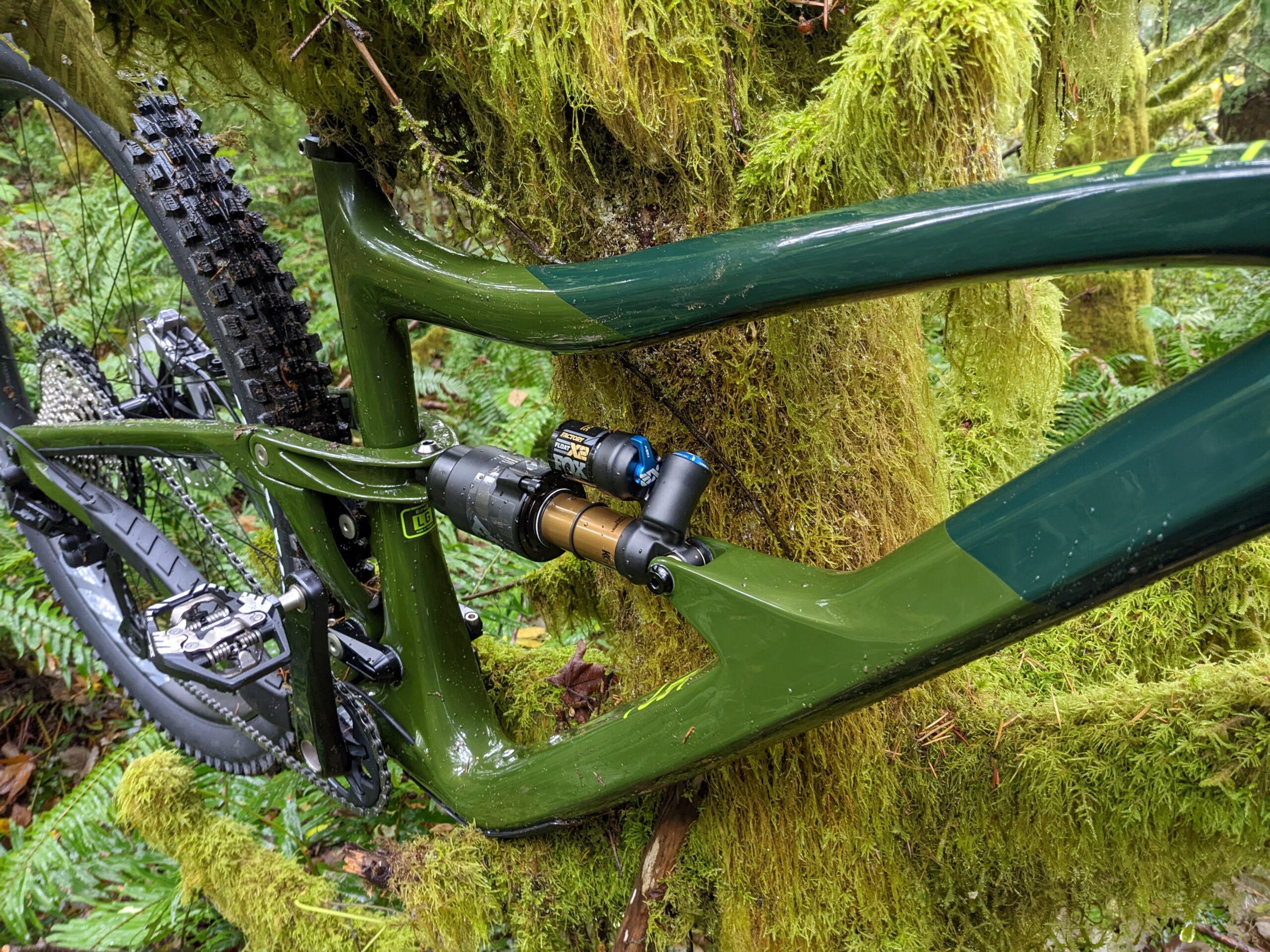
Simon: This is an interesting one. The Ripmo’s travel and geometry numbers say Trail bike, which is then immediately contradicted by the build, which screams Enduro. But that makes sense given how Ibis is positioning the bike, and with that mixed focus in mind, there’s nothing that stands out as a miss. The thing is though, I couldn’t help wishing it was also offered dressed in more Trail-like attire, with maybe a Fox 36 with a Float X and a more civilized tire combo. Call it whatever, Ripmo Lite, Ripmo Trail, Ripmo High Rockies Edition… It just seems like there’s a big gap in their model lineup, with nothing in between the shorter travel Ripley and the basically Enduro spec’d Ripmo, especially for riders who live up where the air is thin and want the capability of the Ripmo, but dialed back just a hair for those long high alpine days. And I definitely agree with David, that green paint job is outstanding.
David: Simon raises a good point that the option for a lighter build on the Ripmo would make a bunch of sense. The current ones are great for the folks who want the more aggressive Trail bike (or Enduro-lite, however you want to describe it) blend that the Ripmo offers, but it’s not hard to imagine it working really well for some folks as more of a long-travel Trail bike with a couple of pounds lopped off, some faster rolling tires, and so on.
Ibis does still have the Mojo in their lineup as something of an in-between option, but it’s not really splitting the difference between the Ripmo and the Ripley. It’ll be interesting to see where Ibis takes things there.
Comparisons
Ibis Ripmo V2
David: I’ve only got a handful of rides on the now-replaced Ripmo V2, but my impression is that the updates Ibis has made are mostly pretty subtle. That’s not a huge surprise, given that the geometry and suspension are the same, with the tweaks really just being limited to the swingarm structure.
That said, the new rear end does feel stiffer to me. The older bike wasn’t unduly noodly or anything, but was definitely on the less-stiff end of the spectrum and the new one feels more stout. I don’t think Ripmo V2 owners should be rushing out to upgrade to the V2S or anything like that, but it’s a nice update to a bike that’s still very relevant without a major overhaul.
David: The new Fuel EX (full review coming very soon) is one of the better comparisons here, but it’s not a perfect one-to-one. Both are mid-travel bikes that are a little more stable and composed on steeper, rougher trails than average for their travel class while still being very versatile. The additional suspension travel and beefier suspension parts on the Ripmo are apparent on the way down — it definitely feels like it’s got more suspension and is more plush and forgiving when it comes to handling rougher sections.
The sizing and fit also feel substantially different. The Large Fuel EX lands pretty squarely between the Large and XL Ripmo, and frankly, that makes the Fuel EX a better fit for me personally. I think those differences in fit are coloring my perception a bit, but comparing Large to Large frames, the Fuel EX is more stable at speed (in what I’d consider its “default” geometry setting of the neutral headset position and low flip chip; see our First Look for the rundown on its myriad geometry settings) and has a bigger sweet spot in terms of its body positioning, with more room for me to move around on the bike without upsetting its balance. And that makes the Fuel EX the easier bike for me to push hard on in some ways, despite its more modest suspension. But again, I think sizing is a big factor there, and the Large Fuel EX just happens to fit me better than the Large Ripmo.
David: The Guerrilla Gravity Smash is also one of the better comparisons here. The two feel pretty similar in terms of where they land on the spectrum between true Trail bikes and bigger Enduro ones, but the Ripmo pedals a little more efficiently and the Smash is a touch more stable at speed. The Smash is also a touch more planted and composed in terms of its suspension performance, while the Ripmo feels somewhat more lively.
David: The Rallon is one of the best examples of a very efficient, precise-feeling Enduro bike out there, and has some similarities to the Ripmo in that they’re both burlier, longer-travel bikes that are more efficient, lively, and engaging at lower speeds than a lot of big Enduro bikes while still being able to go quite hard on rougher, steeper trails, too.
That said, the Rallon is definitely “more” bike overall, mostly in that it’s a little more stable at speed but correspondingly not quite as nimble in tighter spots. The Rallon also has a bit more suspension travel (and feels like it in terms of its composure at speed in rough, fast sections of trail) but is impressively close in terms of pedaling efficiency.
So in short, if you like the sound of the Ripmo but think you’d want a bike that’s a notch more stable and descending-focused at the expense of a little all-around versatility, the Rallon is a really good call; conversely, the Ripmo is a lot like a slightly more compact, versatile Rallon that is a better technical climber in particular.
David: The Ripmo feels like it slots pretty cleanly between the Rallon and the Occam LT — the Occam LT shares a lot of the character of the Rallon in terms of its suspension performance and in that it’s an especially sharp-handling, lively, efficient bike for its class, but it’s a lot quicker handling than the Rallon and substantially less stable and composed at speed. The Ripmo is a nice middle ground for folks who feel caught in between the two Orbeas. Or if you like the sound of the Ripmo but want something a little sharper-handling and more efficient under power, but don’t want to step all the way down to the Ripley, the Occam LT (or maybe even the standard Occam) is a great call.
David: In some respects these two sound kind of similar on paper, but they don’t actually remind me of each other very much. They’re both ~150 mm rear / 160 mm front travel bikes that pedal better than average for their travel range and are capable of being pushed fairly hard on rough, steep descents, but beyond that, a lot of differences start to crop up.
The biggest one is that the Arrival is a more game-on bike that takes a more aggressive approach on the descent to start to come alive, whereas the Ripmo is more versatile in that it feels more cushy and forgiving if you’re taking things easier, and the Arrival requires more care to stay over the front end and weight the front wheel to maintain its ideal balance in terms of body positioning. The Arrival is also more lively and eager to boost off of everything in sight and more stable at speed, at the expense of being less engaging at lower speeds and in tighter spots, and not being as adept a technical climber.
David: The Carbonjack feels something like an Arrival but with a preference for a much more rearward weight bias and upright, centered body position. That makes it a little closer to the Ripmo than the Arrival is, but the Ripmo is again more versatile and engaging at lower speeds, is a better technical climber, and probably pedals slightly more efficiently. The Carbonjack is more stable at speed and its suspension feels slightly more supportive at the expense of a little bit of small-bump sensitivity.
David: The Ripmo is more bike than the Hightower in most respects. It’s more stable at speed and more confidence-inspiring on steep, technical descents but not as engaging on more varied, rolling terrain. If anything, the Ripmo probably pedals a little more efficiently but the two aren’t far off from each other and the Hightower’s suspension provides more traction under power. The Hightower is quicker handling in tighter, slower sections of trail and its suspension feels more plush and forgiving at lower speeds, but the Ripmo is more composed when you start pushing it harder.
David: The Bronson is the best match to the Ripmo in Santa Cruz’s lineup in terms of where both land on the spectrum between shorter-travel Trail bikes and burlier true Enduro ones, but they feel pretty different in terms of how they ride. The Bronson is more playful and eager to throw around in the air, slash and drift corners, and so on; the Ripmo feels more purposeful as something like a sometimes-Enduro bike while still being a more versatile all-rounder than the bigger, longer-travel options in that class. The Bronson has a smaller sweet spot in terms of its preferred body positioning and doesn’t pedal as efficiently as the Ripmo, but its suspension feels more plush and cushy, and it’s got more rear wheel traction under power. At least for my preferences, the Ripmo is the better technical climber due to its better efficiency and calmer handling at low speeds (the Bronson’s front wheel can feel floppy) but folks who really prioritize traction and compliance might feel differently.
Simon: As close as these two are in travel and geometry numbers (mainly head tube angle and reach) they couldn’t be further apart in how they ride on the trail. It’s really interesting just how different they are, and David and I chatted about this recently in the(link to bikes and big ideas podcast). The Ripmo is definitely not a long-travel Enduro bike, but riding them back to back it certainly feels like it is. As to be expected the Ripmo is much more confidence-inspiring descending steep rocky terrain, and in contrast makes the Rowl feel a bit nervous and twitchy. Simply put, the Rowl can’t compete with the Ripmo downhill. The Rowl is even more compact then the Ripmo, and also sports some of the shortest chainstays (425mm) out there, contributing to its more nimble(and sometimes nervous) demeanor. They both pedal very well, and it’s tricky to pick one over the other given the huge difference in spec, however I’m still going to give the nod to the Rowl in that department.
David: Despite their nearly identical travel numbers and comparably burly builds, the Murmur Enduro (full review also coming very soon) is substantially more bike than the Ripmo — it’s more stable at speed, less nimble in tight spots, and doesn’t pedal as efficiently. The Murmur Enduro is also more planted / less lively feeling and generally feels like a more descending-oriented, less versatile all-rounder.
David: We’ve unfortunately had different reviewers on the Rail 29 and Ripmo, but from talking to our folks who reviewed the Rail 29, they sound like a really good comparison for each other. My hunch is that, if anything, the Rail 29 is a touch more plush and planted feeling in terms of its suspension performance and the Ripmo a little more supportive and lively, but the two seem much more similar than they are different.
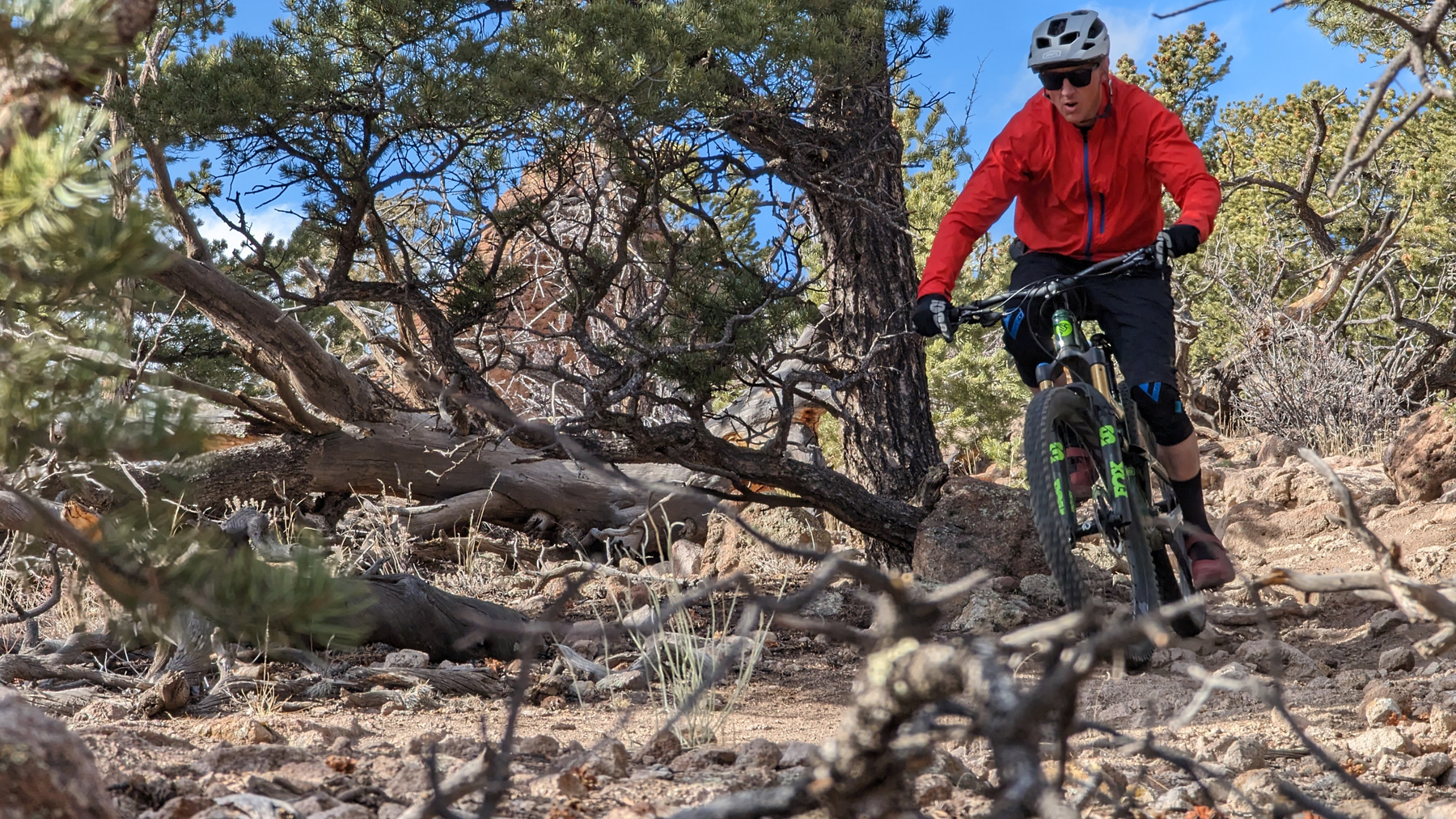
Who’s it For?
David: The Ibis Ripmo V2S is a really good option for folks who want a bike that blurs the line between true Trail bikes and more game-on, descending-oriented Enduro ones. It pedals very efficiently, is a good technical climber, and is a notch more stable at speed and more composed in rough, high-speed situations than average for its travel range, while also being more nimble and engaging at lower speeds than a lot of bigger, slacker Enduro bikes.
That’s not to say that it’s the best of both worlds or anything like that, but rather a bike that straddles the gap nicely and doesn’t fit super neatly into one specific category. But precisely for that reason, the Ripmo V2S is impressively versatile as a burly-ish bike that can handle some very steep, technical descending but is a lot more fun on mellower, flatter trails than most bigger, slacker Enduro rigs. That’s a recipe that I can easily see working for a lot of people, and though it’s not a big departure from the Ripmo V2 that it replaced, the Ripmo V2S still makes a lot of sense for the right folks.
Simon: I agree with David that the Ripmo V2 slots into a unique middle ground between how we typically think of Trail and Enduro bikes, and can absolutely be an excellent bike for a lot of riders — especially those after a one-bike quiver who need something a little more aggressive than most Trail bikes, but more versatile and easier to live with every day than a full-blown Enduro bike.
The more I think about it, I honestly might just be one of those riders. I tend to favor aggressive Trail bikes yet I’m not willing to haul around a long-travel Enduro bike when I’m up over 10,000 ft. I like chainstays on the shorter side, I’m comfortable with a more compact cockpit, and the travel is right where I like it. I mentioned in the “Builds” section that I’d like to see a less burly build option, and that’s true, but it still wouldn’t deter me from considering the Ripmo. The only real fly in the ointment is its climbing efficiency, which honestly is only a tire swap away from being perfectly acceptable. What you’re left with then is this incredibly well-rounded and capable bike, one that I’d have no problem taking up to the high country, and also one that makes the most out of those hard-earned endless descents Colorado is known for.
Bottom Line
The Ibis Ripmo V2S isn’t quite a true Enduro bike in this age of 170+ mm travel bruisers, but it’s a whole lot more versatile for it and is still one of the more aggressive descending 150mm-travel Trail bikes out there. It’s also a great climber, blending very good pedaling efficiency with solid traction under power and predictable low-speed handling. That’s a combination that is going to make good sense for a lot of riders who want a bike that they can push hard on some challenging descents, but who find the biggest, most stable Enduro bikes to be overkill and ponderous — or, put differently, riders who want something a little more stable and confidence-inspiring at speed than a lot of mid-travel Trail bikes without giving up a huge amount of versatility to get there.

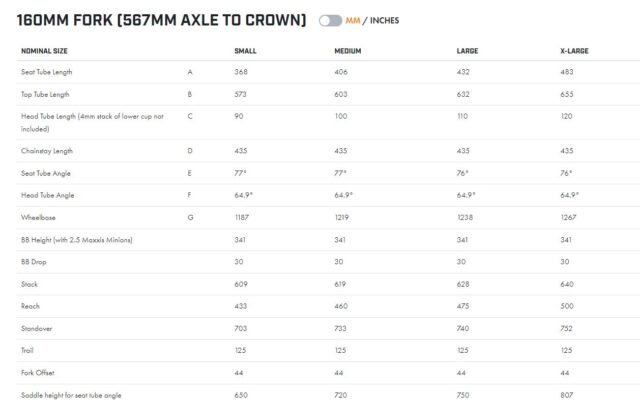
Odd choice for tires. If you need so much traction, and are willing to give up so much rolling resistance in the rear, as to run an Assegai there, wouldn’t you want a beefier casing than EXO+, and a Maxxgrip front tire?
I think the Assegai rear maybe makes sense for people who really want to emphasize traction under power, but I personally tend to lean more your way (and made the same complaint in my review of the latest Pivot Firebird, which came with the same tire spec).
I’ll probably at least put a DD DHRII in back.
A bike I’ve always thought I’d love. Geo not too crazy, DW suspension, threaded BB, etc.
But pricing seems high to me. For the same $8,500 I could buy a Giant Trance X with Mission Control suspension (I’m super intrigued) and carbon wheels. A bit less travel but still……
Glad to see the comparison to the Revel but surprised at no mention of the new Evil Offering LS as they are direct head-to-head competitors (along with the Hightower). All boutique brands in the same category.
Having come off a Ripmo and now on an Offering, I can attest to their similarities and differences; verrrry close with acceleration and uphill speed going to the Ripmo while the Offering gets the nod at technical climbing and when pointed downhill.
Love my V2, Der Kaiser on the back is great for efficient climbing; got a little inline coil thats been a dream so far. Rode Lord of the Squirrels last fall and it was the ideal bike. Can be ridden very hard on the way down if you’ve set it up properly. Mine weights just under 30lb w/o pedals fox 36 carbon everything lol
The slot missing between the Ripley and the Ripmo is a big reason I went with the Occam LT: it seems to approximately occupy that space in between them, which was borne out by some of David’s comparison’s when he reviewed the Occam LT. Thanks for the great reviews!
Not really in the same class but as you have reviewed both recently how does the Ripmo compare to the MX Nomad? How much better is the Nomad on the down and what’s the penalty on the up? Thinking of going Ripmo -> Nomad for riding in Squamish.
Drop a line via the form in the Member’s Clubhouse and we can run through it in more detail!
How about comparing to the Stumpjumper and Stumpjumper EVO?
I’ve been on the V1 Ripmo for four years now. Time to upgrade and I was naturally going to get another Ripmo as I’ve like it that much. Just yesterday saw a head to head video with the new Yeti SB 140. Hmmm it’s got me thinking…. Curious have you guys had a chance to ride that yet?